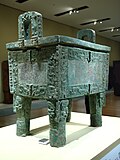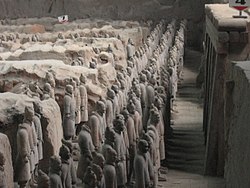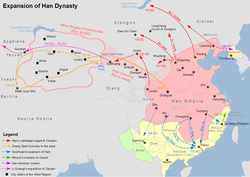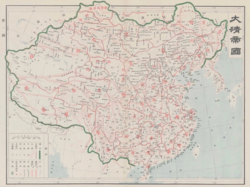Imperial China
Imperial China is a period of Chinese history. It lasted over 2,000 years. It began with Qin Shi Huang's uniting of China under the Qin dynasty in 221 BC. It ended with the overthrow of the Qing dynasty in 1911. Throughout this period, many features of Chinese civilization spread throughout all of China. These included Confucianism, standardized testing, standardized weights and counting systems, trade routes, and Chinese characters. China became known worldwide for all these features.
Throughout this period, China had been ruled by many different dynasties, or ruling family lines. They included the Qin, Han, Sui, Tang, Song, Yuan/Mongol, Ming, and Qing/Manchu dynasties. There were also several periods where China had been ruled by several different kingdoms.
Throughout most of Imperial China, China had been ruled by emperors and empresses who were Han Chinese. However, there were some dynasties where the ruling class was made of Chinese minority groups, such as the Yuan and Qing dynasties. They were ruled by the Mongols and Manchus in that same order.
Imperial China Media
Map of tribes and tribal unions in Ancient China, including the tribes led by the Yellow Emperor, Emperor Yan and Chiyou.
Decorative plaque from the Erlitou culture
The 12th-century BC Houmuwu ding, the largest Bronze Age bronzeware found anywhere in the world
The massive Terracotta Army of Qin Shi Huang, a UNESCO World Heritage Site
A map of the Qing dynasty, c. 1820









